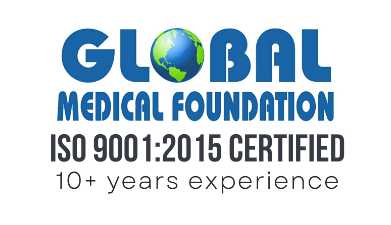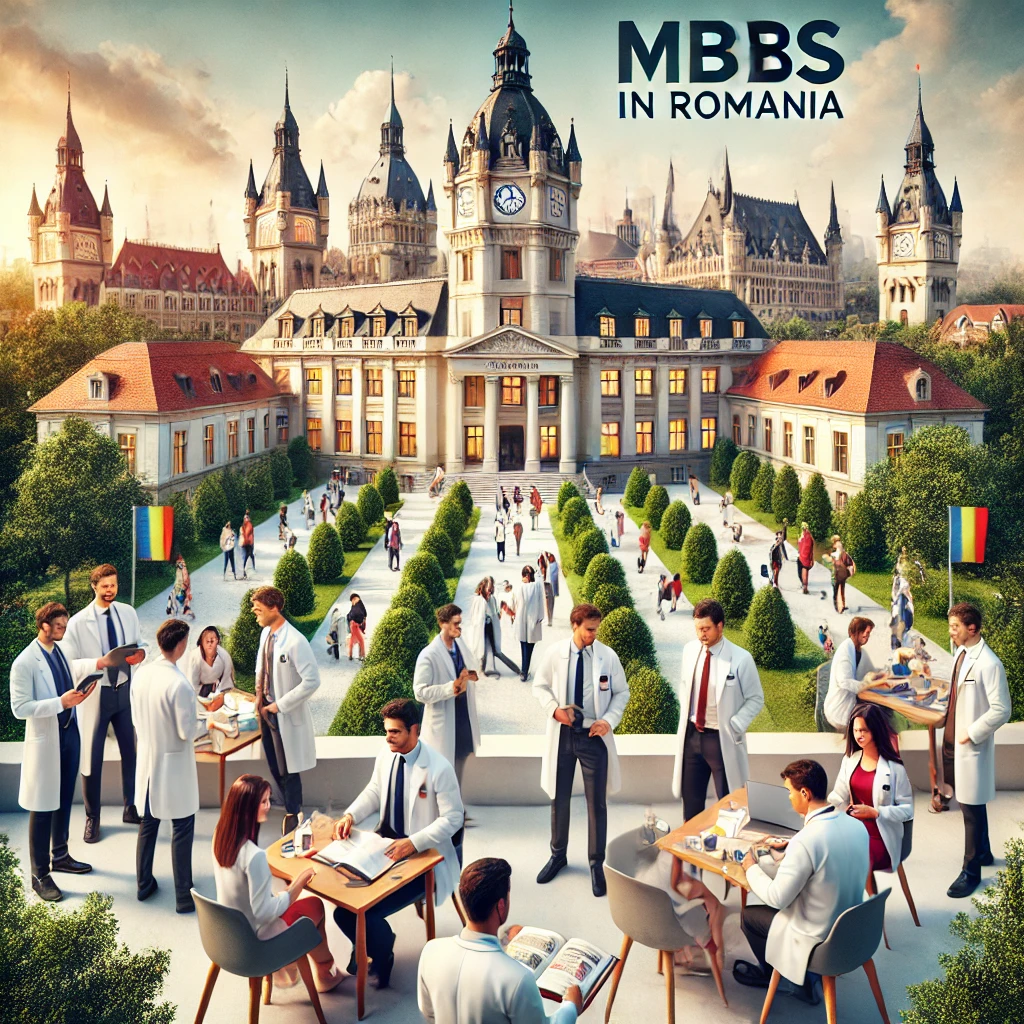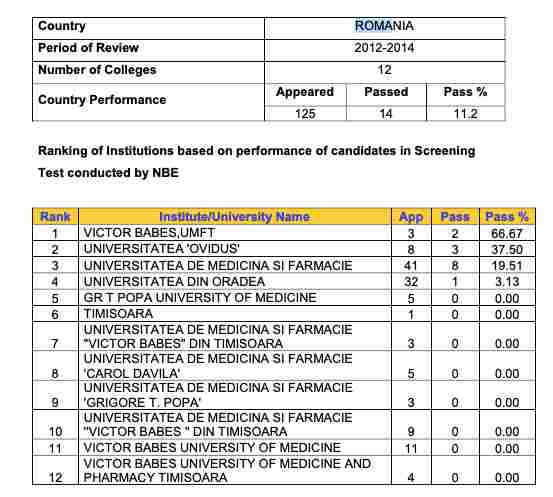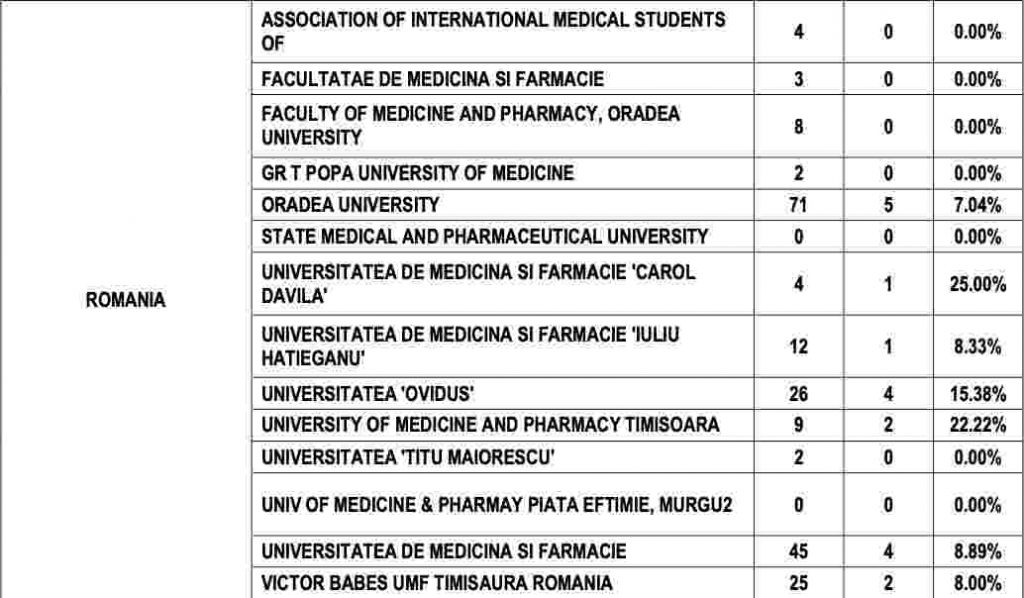MBBS in Romania
Over the years, Romania has become a popular destination for international students. Romania is part of the European Union, which adds to its charm. It stretches towards the south-western part of central Europe and shares a border with Hungary, Ukraine, Serbia, Moldova, and Bulgaria. MBBS in Romania is one of the popular destinations for international students who want to study medicine abroad. For Indian students, Romania is an expensive destination compared to Russia, Uzbekistan, Kazakhstan, and Kyrgyzstan. MBBS in Romania fees start from €6,000 per year which is approx. ₹5,40,000. This is just the tuition fee. Additional expenses include accommodation, meals, application fees, administrative fees and flight fare. Your budget to study MBBS from Romania should be above ₹50 lakh excluding personal expenses and flight fare.
On this page, you will learn about the following:
Table of Contents
- Safety for International Students
- Religion in Romania
- Romania Population
- Romania as a Place to Live
- Weather in Romania
- MBBS in Romania for Indian Students
- MBBS in Romania Duration
- Admission Process
- Documents Required
- MBBS in Romania Fee Structure
- Romania MBBS Degree Accreditations
- Advantages of Studying MBBS in Romania
- College wise FMGE Result
- After MBBS in Romania
- Should you choose MBBS in Romania?
- About Romania
Safety for International Students
Romania is generally considered safe for international students, with a welcoming environment and increasing numbers of students from around the world. Cities with major universities—like Bucharest, Cluj-Napoca, and Iași—are particularly accommodating, offering student services, cultural activities, and public safety measures. As in many places, it’s wise to be mindful of pickpocketing and scams, particularly in busy tourist areas or public transport, but serious crime is relatively low. Most Romanian universities offer support for international students, and locals are often friendly and helpful to newcomers.
Religion in Romania
Romania is predominantly Christian, with the Romanian Orthodox Church playing a central role in cultural and spiritual life. Approximately 86% of Romanians identify as Orthodox Christians, with Roman Catholics, Protestants, and smaller religious groups making up the rest. Religious traditions and customs are important in many Romanians’ lives, and religious holidays, especially Easter and Christmas, are celebrated widely. The church is involved in social and charitable work, and Romanians generally hold religious institutions in high regard, especially in rural areas.
Romania Population
Romania’s population is around 1.91 crore, making it the 7th most populous country in the EU. The population has declined in recent decades due to low birth rates, high emigration, and economic factors. The largest city is Bucharest, with approximately 18 lakh people. Other important cities include Cluj-Napoca, Timișoara, Iași, and Constanța.
Romania as a Place to Live
Romania offers an appealing mix of modern urban life and traditional rural charm, making it attractive for expats and locals. Cities like Bucharest and Cluj-Napoca have thriving cultural scenes, modern amenities, and a relatively low cost of living compared to other European cities. Romanians are known for their hospitality, and English is widely spoken among the younger population, especially in urban areas. Rural Romania, with its preserved traditions and scenic landscapes, offers a slower pace of life and is ideal for those seeking a more nature-focused lifestyle. While economic opportunities are growing, some infrastructure challenges exist, especially in rural regions.
Weather in Romania
Romania has a temperate-continental climate, with four distinct seasons. Winters (December to February) can be cold, particularly in mountainous regions, where temperatures often dip below freezing and snowfall is common. Summers (June to August) are generally warm, with average temperatures between 25–30°C, but they can get hotter in southern areas. Spring and autumn are mild and pleasant, with vibrant seasonal colours, making them ideal for outdoor activities. The Carpathian Mountains and the Black Sea coast create diverse microclimates, making Romania a great destination for both winter sports and summer beach vacations.
MBBS in Romania for Indian Students
MBBS in Romania for Indian students quick overview:
| Duration | 6 years in Romania |
| Medium of Instruction | English for the full course |
| Do I need to learn the local language? | Yes, you will have to learn the local language as well. |
| MCI approved universities | Yes |
| WHO approved universities | Yes |
| MBBS in Romania Fee structure | It depends on the university. On average, full course fees are between ₹32-35 lakh. This is just the MBBS in Romania fees (tuition fee). All other expenses are extra. |
| Romania MBBS degree is valid in India? | Yes, once you clear the licensing exam (NEXT) your MBBS degree from Romania will be equivalent to MBBS in India. |
| Do I need to qualify NEET to study MBBS in Romania? | Yes, qualifying NEET exam is mandatory for admission. |
MBBS in Romania Duration
Like other European countries, MBBS in Romania duration is 6 years.
Admission Process
Romania is a safe country to study medicine for international students. The admission process for MBBS in Romania is simple. The candidates are suggested to thoroughly search about the university in Romania where they want to study. They should check the fee structure, cost of living, accommodation and its comfort, affordability and pros and cons of studying in that university. Apart from this, MCI has recognised 8 universities for a medicine degree in Romania. You must apply to an MCI approved university only after qualifying NEET. The admission to Romania universities will also depend on the availability of the seats for that year. Also, the tuition fees paid every year by the student does not include any donation. Here is the admission process:
- Firstly, students are required to fill the application form of MBBS for the required institute.
- The student must attach the copy of application form along with passport copy and other qualification details. The documents for admission includes the academic documents such as the school certificates and mark sheets, date of birth certificate, recent medical check-up certificate, copies of passport, photographs etc.
- After the duration of 7 to 8 days, international students get to know the status of their admission/application.
- After getting the admission letter the student has to apply for Visa at the Embassy of Romania in Delhi.
- After getting the visa, the student has to plan their travel.
Documents Required
For MBBS in Romania for Indian students, do not forget to attest these important documents-
- Passport
- 10th Certificate & Mark sheet.
- 12th Certificate & Mark sheet.
- Birth Certificate.
- 10 passport size photographs
- Official Invitation letter from the Medical University of Romania.
- Authorization of all documents from the Ministry of External Affairs, New Delhi.
- Legalization of all documents from the Romania Embassy.
- Visa fees.
- Bank receipt of University 1st year Tuition fee (required for some Universities).
- Medical test documents.
MBBS in Romania Fee Structure
The country is famous for its high-end education system for national and international students. It provides a low-cost degree in medicine to international students. Indian students can lead the advantage of different culture and educational parameters in Romania. Hence, making it a suitable educational hub for international students. MBBS in Romania fee structure is moderate and differs with the college to college. However, the fee structure of any MBBS in Romania for Indian students is less than any Indian college. As the class size is small you can easily clear your doubts and increase your knowledge of the subject. Let’s have a look at the MBBS in Romania fee structure in details.
| Name of university | Tuition fees/year |
| GR T. Popa University of Medicine and Pharmacy Lasi | 5,000€ |
| “Victor Babes” University of Medicine and Pharmacy, Timisoara | 4,800€ |
| “Ovidius” University of Constanta | 5,000€ |
| Iuliu Hațieganu University of Medicine and Pharmacy | 6,000 € |
| University of Medicine and Pharmacy | 5,000€ |
| Carol Davila University of Medicine and Pharmacy | 5,000 € |
| University of Oradea | 5,000€ |
Romania MBBS Degree Accreditations
The MBBS Degree from Romania is approved by the following to name a few:
- Medical Council of India
- World Health Organisation
- UNESCO
- European Council of Medical Order (CEOM)
- British Medical Council
The students who graduate after studying MBBS from Romania can appear for exams such as NEXT and USMLE.
Note: Please check the recognition of individual universities.
Advantages of Studying MBBS in Romania
Following are the advantages of studying MBBS in Romania for Indian students:
- Looking at the brighter side, Romania is blessed with multiple facilities and ensures the best education for international students.
- There is no requirement of an entrance examination to study in a medical university of Romania (Only NEET marks are sufficient).
- Wide range of possibilities and broad exposure to clinical practise due to highly equipped multi-profile hospitals.
- Living cost is affordable.
- The MBBS degree that students get from Romania medical colleges are globally renowned and hold great worth.
- Universities of Romania are recognised by WHO, UNICEF and MCI.
College wise FMGE Result
No matter where you study MBBS from, at the end of the day, what really matters is that you clear the screening test. Therefore, it is important to know about the universities from which the Indian students have performed well. This information is provided to us by the National Board of Examination or NBE. This is the body which conducts the screening test called FMGE. The FMGE exam will soon be replaced by NEXT. Every student who is going abroad in or after 2019 will be appearing for NEXT. Even the students who study MBBS from India will have to give NEXT for obtaining the license.
Here is FMGE or MCI Screening Test passing percentage after MBBS in Romania between 2012-14:
FMGE passing percentage after MBBS from Romania between 2015-18:
After MBBS in Romania
Medical education from Romania gives many options to students graduating from these universities. After completing medicine from Romania, a student will have the following options:
Option 1: The most taken option is to come back to India and apply for FMGE or the MCI Screening Test as it is commonly known as (FMGE has been replaced by NEXT). Prepare for this exam, clear this exam and get the registration number from the MCI for medical practice in India. NEXT will replace NEET PG.
Option 2: After completing your degree in Romania, you can explore the opportunities in Romania itself and go for PG also, and settle in Romania. You can also look for work in EU nations.
Option 3: While studying, you can apply for USMLE in case you want to settle down or practice in the United States. USMLE has 3 steps and those who clear all the 3 steps and get Permanent Registration from the medical council of the USA can practice there. PLAB, which is the licensing exam of the UK is another popular choice of students. Students can also go for PG in Australia, Canada, New Zeland. The MBBS degree of Romania is valid worldwide.
Should you choose MBBS in Romania?
If you check the facts presented by the National Board of Examination, only 211 Indian students appeared for FMGE after studying MBBS from Romania. In comparison, more than 8,000 Indian students appeared for this test after studying MBBS in Ukraine and more than 11,000 after studying MBBS in Russia. Romania is not a popular destination and has very few takers. The reasons are many, here are the major disadvantages of studying MBBS in Romania:
- the visa process is tougher than that of Russia or Ukraine
- Indian mess facility is not available
- as the students who actually go are so few, there is no Indian community
- the quality of education is not good
- this is proven by the fact that the FMGE passing percentage is so low
- there are better options available in Ukraine and Russia
- both Ukraine and Russia have a higher overall FMGE passing percentage
- there are universities such as Bukovinain State Medical University with a very high FMGE result
- the fee is affordable in Romania but is still higher than that of most of the universities in countries such as Kyrgyzstan, Ukraine, Russia
- Indian mess facility is also available in most of the universities in Russia and Ukraine (Europe)
- no in-class coaching facility for NEXT
As there are better options available, there are not many Indian students who opt for MBBS from Romania. Also, there is no apparent advantage of choosing Romania if your aim is to come back to India as you ultimately have to paper for NEXT. Therefore, it is better to go to a university which has –
- a higher number of Indian students and thus an Indian community and a feeling of home away from home
- availability of an Indian mess facility
- NEXT coaching available
- a higher and better FMGE passing percentage
- all this and yet lower fee
- easy admission and visa process
If you are looking for an option in Europe, then we suggest that you check:
About Romania
Information on Romania –
| Official Language | Romanian |
| Capital | Bucharest |
| Currency | Romanian leu (RON) |
| Exchange Rate | ₹17 = 1 Romanian leu (RON) |
| Population | 1.94 crore |
| Time Difference from India | -2.30 hours from India during summer & -3.30 hours from India during winters |
| Travel time from Delhi to Kyiv, Ukraine | 10-12 hours connecting flight |
| Fee structure | The average is around 5,000 € |
| Type of colleges | Government |
| Dominant Religion | Christianity |
The monthly average temperature in Bucharest –
| Month | High / Low(°C) |
| January | 3° / -4° |
| February | 7° / -2° |
| March | 12° / 2° |
| April | 19° / 7° |
| May | 23° / 12° |
| June | 27° / 16° |
| July | 30° / 18° |
| August | 30° / 18° |
| September | 25° / 13° |
| October | 17° / 7° |
| November | 9° / 2° |
| December | 4° / -2° |
Romania’s Economy
Romania’s economy is one of the fastest-growing in the EU, driven by services, industrial production, and agriculture. Key industries include information technology, automotive, textiles, and agriculture, with significant agricultural output in grains, vegetables, and livestock. Romania’s IT sector has become a leading tech hub in Europe, and the country is known for its skilled workforce in this field. After joining the EU in 2007, Romania benefited from increased foreign investment and funding, improving infrastructure and economic stability.



